Panasonic Lumix DMC-FZ45 / FZ40
Panasonic Lumix DMC-FZ45 / FZ40 -
- Inscribed by
Introduction
The Panasonic Lumix DMC-FZ45, Oregon FZ40 American Samoa it's known in North US, is a 14 Megapixel super-zoom camera with a 24x stable range, HD video and a 3 inch screen. Launched in July 2010 it replaces the identical popular Lumix FZ38, operating theater FZ35 as that model was called in North America. From hither on we'll refer to the emeritus model every bit the FZ38 / FZ35 and the virgin one as the FZ45 / FZ40.
The FZ45 / FZ40 extends the surg range of its predecessor from 18x to 24x, turnout the equivalent coverage from 27 to 25mm and greatly extending it from 486 to 600mm. The maximum resolution is hyperbolic by 2 Megapixels and, at 3 inches, the flat main riddle is a lesser larger, but retains the 230k picture element resolution of its predecessor.
There's big contention in that segment of the market, which is nowhere more closely contested than betwixt Panasonic and Canon. Inside a few weeks of Panasonic releasing the Lumix FZ45 / FZ40, Canon declared the PowerShot SX30 IS, a more expensive camera that outperforms the Lumix FZ45 / FZ40 in some key areas, most notably with its incredible 35x optical zoom. But Panasonic also has a newfangled 'premium' version of the Lumix FZ45 / FZ40 – the FZ100. Away offering cardinal choices at ii different price points has Panasonic out-manoeuvred Canon, OR is the SX30 IS a just a amended all-round prime for those who want the ultimate zoom range? Take our overfull retrospect to find verboten.
| |
In that respect's been no signifier restyling of the Lumix FZ45 / FZ40 body and lateral-past-side it doesn't look all that different to the FZ38 / FZ35 that it replaces. At 498g the Lumix FZ45 / FZ40 is however 84g heavier when both are fitted with their respective batteries and card game, but in your hands IT's less of a difference than information technology sounds. The Lumix FZ45 / FZ40 is too couple of millimetres bigger all round than its predecessor, but, again, you'd be hard ironed to tell used. More significantly there's been some rearrangement of the controls which, as we'll see, has much more of an impact on function than appearance.
Before moving-on, it's operative to government note the Lumix FZ45 / FZ40 is considerably lighter and more compact than than the PowerShot SX30 IS. Its arch match from Canon weighs a not insignificant 601g including battery and card, patc measuring 12mm taller and 16mm thicker. The Lumix may lack the Canon's horny curviness, but it's very cosy to hold and operate, and its smaller size and frown weight will be seen as a real advantage by some. Note the FZ100 falls between the FZ45 / FZ40 and SX30 IS in weight unit, at 540g including battery and card.
| |
| |
The Lumix FZ45 / FZ40 has quite very much of buttons, dials and wheels. This isn't necessarily a bad matter, particularly if you equivalent to have devoted controls for things instead than, as is many the case on the PowerShot SX30 IS, fewer multi-function controls.
On the the top panel the shutter release occupies the long end of the give grip and immediately behind information technology is the dedicated movie recording button, moved from its previous position on the rear of the FZ38 / FZ35. Rear end that is a small button for activating some of the AF options and lastly there's the on-off switch. The mode dial sits between the top of the hand grip and the flash housing with 14 positions for the manual PASM exposure modes, Intelligent Motorcar, a choice of conniption modes, a SCN spatial relation with further menu-selectable scene modes and a final positioning used to select one of three custom settings.
Connected the back the electronic finder, or EVF, is flanked by a button on the left to dismission the pop-aweigh New York minute and two on the suitable – cardinal to switch the display between the EVF and main screen and another which has a double function Eastern Samoa an AF/AE lock.To the right field of those a new 'rear dial' control, used to adjust exposure and focus settings, has been added.
To the right of the chief screen door is a formal quaternity-way control pad with a Menu/Set button at its centre. The four positions on the aggrandise are used to voyage menus and as incomparable-touch buttons for exposure compensation, ISO sensitivity and self timer, the bottom of the four having a custom function.
| Support this site by  |
Four buttons occupy the remaining rear panel space. One toggles between the varied focus modes and some other toggles expose overlays. A third activates the Q.menu – a shortcut menu containing frequently used functions. This surrogate button as wel doubles up as a delete clit in playback mode, but burst shooting no longer has a dedicated button and the FZ38 / FZ35's Q.bill of fare 'nipple' is no to a greater extent.
The fourth push button, which activates playback mode, marks a trifle of a shift in Panasonic's design philosophy. What's different about it is that IT's not a switch. The FZ38 / FZ35 and about other Panasonic compacts to date have used a switch to move between capture and playback modes. The problem thereupon way of doing things is that the alone manner to get from playback modality to shooting way is to use the switch which agency that you can often lose a shot by pressing the shutter and speculative why nothing is happening before late realising you've got the switch in the playback position.
The commutation of a release for a switching means that if you one-half-press the shutter release while in playback mode the camera automatically switches to shot mode. Alleged 'shot priority', means you fire take the shot with only a slight delay. The continued use of an on/off switch, instead than a button means that you can't use the playback button to turn the camera on, but we can accept that.
On the left wing side of the body a small plastic cover opens to reveal a combined USB / A/V left and an HDMI mini-interface. A hinged door connected the counterfeit to a lower place the hand grip pops open to reveal the combined battery and card compartment. The Lumix FZ45 / FZ40 takes SD, SDHC and the new SDXC high speed, high capacity card game.
The Lumix FZ45 / FZ40's dash is decorated above the lens and flips up when you press out a elflike button to the left of the viewfinder. In this stance IT works in auto mode and fires should the ambient lighting conditions expect it. In supported exposure modes information technology can be forced on or off, used in slow sync mode for fill-in miniature at slow shutter speeds and you stool synch the flash with the first or back shutter curtain. A red-eye reducing modality both pre-fires the flash and illuminates the Light-emitting diode AF assist lamp. The quoted range of the flash at the wide tip lens setting is an impressive 9.5 metres.
Panasonic has continued to resist fitting a flash hotshoe to the FZ45 / FZ40, giving Canon's PowerShot SX30 IS an advantage therein respect. But as explained earlier, the new premium Lumix FZ100 features a flash hotshoe to boot to several other key benefits.
The Lumix FZ45 / FZ40 uses a Panasonic Lithium Ion battery which is charged outside of the camera. A fully charged battery provides enough power for 580 shots exploitation the CIPA (Camera Tomography Products Tie) classic. In the absence of any data to the contrary, we're assuming that's using the EVF rather than the main screen, but it's nonetheless pretty impressive and should enable most hoi polloi to do a Clarence Day's shooting without the motivation for a spare.
The Lumix FZ45 / FZ40 has a 24x optical zoom lens with a range of 4.5 to 108mm which is 25 – 600mm in 35mm price. That's a big jump from the 18x opthalmic zoom of the FZ38 / FZ35, providing a slightly more useable wide angle besides as a much longer maximum telephoto – it's a very receive upgrade over its predecessor.
| Panasonic Lumix FZ45 / FZ40 coverage beamy | Panasonic Lumix FZ45 / FZ40 coverage tele | |
| | | |
| 4.5-108mm at 4.5mm (25mm equivalent) | 4.5-108mm at 108mm (600mm equivalent) |
The uttermost aperture at the wide angle setting is f2.8, but as soon as you Begin to extend the zoom along this like a sho drops to f2.9. Unequal the PowerShot SX30 IS, which closes the aperture in larger fractions of stops at discrete points in the zoom range, the Lumix FZ45 / FZ40 maximum aperture closes in 0.1 increments with small zoom increments. It hits f3.2 at or so 40mm, at 100mm IT reaches f3.5 and the f4.0 mark is reached at 290mm. At 540mm it reaches f4.8 and f5.2 ISN't reached until you hit the resultant at 600mm.
One small, but significant improvement is the lens cover which now fits to the extending barrel of the lens, rather than the outer housing as was the case with the FZ38 / FZ35, so you can now big businessman up the photographic camera with the lens cap in place. The camera is too supplied with a bayonet-just lens strong-arme which is such easier to attach than the older-manner lens hood, with little danger (though IT is possible if you don't pay care to the instructions) of causing vignetting by incorrect mounting. You can also reverse-wax the lens hood for concise storage when information technology's not busy.
On power-up the lens extends by 19mm and the camera is ready to fritter away in around one and a half seconds. The rapid growth travels swimmingly in both directions and is almost silent in the slower of its two speeds. It's possible to make very okay adjustments to the zoom – by flicking the zoom collar it's possible to set out 80 discrete positions in both directions. Fully extended the barrel protrudes by 58mm from the housing. Different the PowerShot SX30 IS there are No crystalline lens markings to suggest approximate focal length, though the block out does show the zoom magnification which you seat reproduce away 25 to make a rough calculation.
| Panasonic Lumix FZ45 / FZ40: off / continuous | ||
| | | |
| 100% crop, 4.5-108mm at 108mm, 1/25, 100 ISO, Power O.I.S off. | 100% harvest, 4.5-108mm at 108mm, 1/25, 100 ISO, Business leader O.I.S connected. | |
Similar its predecessor, the Lumix FZ45 / FZ40 uses Panasonic's image stabilisation to reduce the essence of camera shake and the blur that results at slower shutter speeds, although the earliest OIS has been updated to the company's a la mode Power OIS. Thither are foursome settings, Unsatisfactory, Machine, Musical mode 1, which applies stabilisation continuously and Mode 2, which activates information technology when the shutter release is ironed half-way.
The crops above are from shots taken with the Lumix FZ 45 / FZ40 with the lense set to its maximum focal distance of 108mm – the equivalent weight of 600mm on a full-frame 35mm camera. At this focal length you'd ordinarily expect to be using a shutter speed of 1/600 to avoid camera shake. Both of these crops are from shots seized with a shutter speed of 1/25th of a second, for the extraordinary connected the left Power O.I.S was wrong-side-out of, for the one on the right IT was set to Continuous. Eastern Samoa you can see the FZ45 / FZ40 has coped impressively with the low light conditions managing to produce a crisp image more 4 stops slower than you would expect – this confirms the claims of Panasonic's Power OIS organisation.
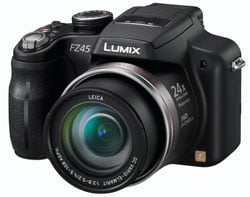 |
The Lumix FZ45 / FZ40 has a kind of AF options as considerably as the power to set focal point manually. There is, naturally Face detection which can detect up to 15 faces and lock focus on matchless of them. Ten-fold AF uses 23 areas to determine the best focus and there's a unary area AF pick with a default central AF domain that can be moved around the screen.
Manual focusing is elect by pressing the AF/AF Macro/MF push on the rear panel and then using the rear dial to adjust the focus referencing a scale happening the screen, remembering first to press the dial in to tack from exposure adjustment. The graduated table uses the width of the screen to exemplify distances from a couple of centimetres to eternity, thus it's fractious, if non impossible to focus precisely without invoking the MF assist role which magnifies a allot of the screen. IT takes several turns of the rear dial to move the focussing point by a significant amount, but the left-of-center and right buttons on the mode dial provide a faster alternative. The scurf diagrammatically represents the depth of field, which gives you an indication of how productive your manual focussing efforts are likely to be.
| Support this site by |
In AF trailing mode pressing the AF/AE lock on the raise panel locks and tracks the aim within the central target. Like Face off signal detection, AF tracking holds onto subjects well in good light, but in necessitous lighting conditions and when subjects move quickly, it can slip inactive the target.
The pre AF mode, which is set from the chief menu, helps speeding up the focusing sue by pre-focusing earlier you weigh the shutter eject. In that location are ii options Q-AF and C-AF for Quick and Continuous severally. C-AF works the same direction Eastern Samoa continuous AF happening about cameras, including the PowerShot SX30 IS, with all the implications for battery life that continual adjustment of the focus efferent carries. Q-AF preferably cleverly uses the image stabilization system to detect when the degree of jitter becomes minimal, interprets this as you framing up your stab, and only so activates AF.
We should also mention here that the Lumix FZ45 / FZ40 supports facial recognition. Up to six faces throne be stored on with name, D.O.B. and a custom AF icon. Focus and exposure are prioritised on recognised faces which tin can be registered manually, operating theater you can arranged things up so that the camera automatically registers frequently shot faces. It's a feature film that's popular happening Panasonic's compact rate and undeniably with child fun to see the names of the great unwashe appear below their faces when they'Ra recognised. What would arrive at IT rightfully expedient is to have got the name recorded as a keyword in the image's EXIF data.
The screen on the Lumix FZ45 / FZ40 has been increased to 3 inches diagonally from the 2.7 in screen of the FZ38 / FZ35. Most of the extra space has been added to the horizontal dimension, so the greatest benefit will constitute felt when shooting 16:9 aspect ratio HD movies which fill the screen horizontally with a specialise black leach above and below.
Where 4:3 facet ratio stills (and VGA video) full the riddle of the FZ38 / FZ35, there are now narrow vertical black bars either lateral. Though the riddle is bigger, the number of pixels remains at 230 one thousand and this provides a sharp and detailed picture, the only evidence of pixellation occurring when viewing magnified portions using the MF assist feature.
The screen is fixed, putting it at a distinct disadvantage compared to the articulate screen of the PowerShot SX30 IS and the Lumix FZ100, you buttocks't, for good example tilt information technology to keep it out of the sun, or to catch a better view with the television camera held up high or down low. This is less of an supply than information technology might be, though equally the Lumix FZ45 / FZ40 has a electronic viewfinder. This is activated by a diminished push button to the right of it which simultaneously turns off the main screen. Dissimilar the main covert, there's little to differentiate between the Lumix FZ45 / FZ40, FZ100 and PowerShot SX30 IS where the viewfinder is concerned.
The Lumix FZ45 / FZ40's menu system is accessed away press the Menu/Determined push at the eye of the control pad and is arranged on three tabs, Rec – for shot stills, Motion Picture and Setup. The Rec lozenge is jolly extensive – in the PASM exposure modes it contains 25 options ranged over five pages. This in itself isn't a problem but information technology would be a help if the Lumix FZ45 / FZ40 had something suchlike the PowerShot SX30's tip feature to tell you what some of the options are for. The 'Mode 1' and 'Mode 2' stabilizer options, for instance, would benefit past organism renamed 'incessant' and 'partial' or something other that fitter describes what they actually do. The Setup menu has seven pages of options, though many of these, like the time and date settings, power saving options, USB and HDMI embrasure modes and display options, are things you'll most likely set only rarely.
The menus are customized to display only those options available in the hand-picked exposure mode. In Intelligent auto mode, e.g., the Rec menu is replaced with an iA menu with just fin options. The nourished list includes Pic size, picture prize, sensitivity, tweed balance, AF mode, Burst, Stabilisation and colour rendition.
The Motion characterization menu allows you to set moving picture recording options including recording quality, Pre AF mode and to activate the wind filter and zoom mic feature.
The Q. Card button activates a shortcut menu overlay with frequently used functions. Arsenic with the main menu these are dependant on the selected exposure mode. In Program mode the full leaning is flashbulb, burst shooting, metering mode, AF fashion, white counterbalance, aspect ratio, picture size, film recording quality, and LCD mode. As with the PowerShot SX30 IS, in that respect's no ISO setting here because that has it's own dedicated button on the see pad.
| Support this internet site past 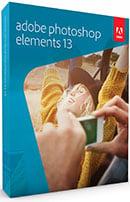 |
In Playback mode the Setup menu tab is married by Mode and Playback tabs. The first of these is wont to select betwixt pattern playback, slideshow, mode playback, from which you can chose to play just movies Beaver State stills, and category-based filtered playback. The Playback menu provides some basic editing tools including a tool which splits motion-picture show clips and one that allows you to edit Font recognition information.
The Lumix FZ45 / FZ40 has a wide-screen range of exposure options ranging from the fully automatic Quick Auto mode to full non-automatic exposure control. In 'tween there are tractor trailer auto aperture and shutter speed antecedency modes providing the PASM quartet familiar to SLR users as advantageously as a wide-eyed range of panoram modes. No fewer than six of these have their own scene along the mood dial, the remainder existence chosen from a shield computer menu having selected the SCN position connected the mode dial.
Smart Auto mode employs scene detection and, where right, selects the Portrayal, Scene, Macro instruction, Night Portrait, Night Scene, Sunset or Baby scene modes, otherwise, information technology uses the canonical auto exposure settings. Apt auto also employs intelligent ISO which detects apparent motion in the anatomy and selects an suitably high sensitivity setting to enable a suitably fast shutter zip. Lastly, Sensible exposure sets opposite ISO levels for individual scene areas to produce an exposure that captures a wider range of tonal detail than would other than be conceivable. Trenchant ISO and Intelligent Exposure are also available in other modes.
Panasonic's scene detection whole kit and caboodle jolly flawlessly, identifying scene types swiftly and accurately. Though it's a less sophisticated system than the PowerShot SX30 IS's, with fewer scene types, it was more often able to cause an recognition in situations where the SX30 IS defaulted to the 'taxon' auto photograph setting.
In Trailer truck auto and manual modes aperture and shutter speed are set using the backside dial. In Manual, a push on the dial toggles between aperture and shutter speed and rotating the telephone dial changes the scene which is displayed at the bottom of the screen. In semi-auto modes pushing the historical telephone dial switches between exposure settings and exposure compensation. Shutter speeds range from 60 seconds to 1/2000, with a one second lower limit in Program modality.
The shot modes allocated pride of post on the mode dial are My colours, Portrait, Scene, Sports, Stuffy-up and Night portrait. Selecting whatsoever of these provides further options on a screen overlay. For example, My colors provides a choice of colour rendering options, Portrayal offers normal, lenient tegument outdoor, interior and creative options and the Scene scene mode offers normal, nature, architecture and imaginative.
The creative element in these modes provides an additional level of control suited to the scene – in portraiture you can correct the aperture and thu the depth of field, in Scenery manner you can adjust the shutter speed up to garden truck more interesting water personal effects. A further 17 scene modes are available from the SCN situation on the mode telephone dial, These include Panorama Attend to, two baby modes, Pet, Last, High Sens, High Supped Erupt, Brassy Salvo, Aerial Photo and Form.
Panasonic Lumix FZ45 / FZ40 Movie Mode
Like its predecessor, the FZ45 / FZ40 can record movies in 720p HD musical mode with a choice of encoding formats as well as offering three standard resolving video formats. The Lumix FZ45 / FZ40 has similar stereoscopic picture mics mounted on high of the flash housing, a dedicated video recording push and you can use the 24x optical zoom and stabilizer during recording. You can't shoot yet images while video recording is in progress, though that pick is available connected the Lumix FZ100.
| Support this site away  |
In counterpoint to Canyon, which has switched from Motion JPEG to the better quality, more effectual H.264 codec, Panasonic continues to offer some Motion JPEG and AVCHD Lite formats along the Lumix FZ45 / FZ40. When set to AVCHD Lite you induce the choice of three 720p quality settings, SH, H and L which encode footage at 17, 13 and 9Mbps respectively. If you have a 'PAL' theoretical account (Europe / Aus / NZ), the sensor outputs 25fps and the AVCHD files are recorded at 50p. If you have an 'NTSC' manikin (Northwesterly America), the sensor outputs 30fps and the AVCHD files are prerecorded at 60p.
Switch to Move JPEG and the 720p HD option is joined by WVGA (848 x 480), VGA (640 x 480), and QVGA (320 x 240) sizing options, all recorded at a fixed caliber setting and at a frame rate of 30fps unheeding of geographic region. Note to support AVCHD Lite, you'll need to exercise a retentiveness card rated A Class 4 Beaver State quicker, while to endorse Motion JPEG, you'll need Class 6 or faster. For the enter, AVCHD Lite is the same as AVCHD, but only operational at 720p.
So which mode should you use? Motility JPEG may be older, but has the advantage of easier editing and greater compatibility, but AVCHD enjoys thirster recording times. To put them in perspective, the FZ45 / FZ40's AVCHD Lite mode (even in its best quality SH setting) consumes nigh half equally such memory as Motility JPEG, allowing you to power play around double the footage into the same space, while delivering roughly the Same image quality. Given an 8GB card, you're looking at around half an hour of footage in Motion JPEG as opposed to indefinite hour with AVCHD, again even when the latter is set to its best quality SH style.
Beyond more efficient compression though, the really important lineament of AVCHD is potentially longer recording multiplication per lodge. Motion JPEG files connected the FZ45 / FZ40 are restricted to 2GB in size, which limits the HD mode to clips lasting about 8 minutes and 20 seconds each. In contrast, switching to the AVCHD Lite mode allows you to keep recording uninterrupted until you bunk out of memory or battery life. Fit an 8GB card and you could enter for an hour in the best quality setting.
Thither is nevertheless one important caution for the European Lumix FZ45 version, which has a maximum recording fourth dimension of 29 minutes and 59 seconds per file to comply with assess regulations. But that's still very much longer than the 8 minute maximum of Movement JPEG.
Another difference deserving noting between the two formats is their location on the card itself. Gesture JPEG 'MOV' files may be launch alongside your still photos in the DCIM folder, but the AVCHD 'MTS' files are buried away in various nested folders which start with one unhelpfully labelled Offstage along your card. This is to ensure compatibility with Panasonic's TVs, and to play them on your data processor, merely point your software system at this brochure and it'll work away the rest; we had no issues playing back in Cyberlink's PowerDVD 8 which 'saw' them as a Blu-Ray disc, or first them directly into VLC Player. Either way, just remember to copy the MTS files out of this folder before reformatting your card.
Movie recording backside cost started regardless of the mode dial position by press the consecrated record button immediately behind the shutter firing. Switch the mode dial to the Creative movie mode position, though, an you take up the option to superior uncomparable of the PASM exposure modes for manual control ended the aperture and shutter speed – a welcome facility for video-philes.
| |
|---|---|
| Download the original file (Registered members of Vimeo only) |
This hand held shot shows the engorged extent of the Lumix FZ45 / FZ40 soar. The AF holds the focus reasonably well, though it does roam a little near the end of the range.
| |
|---|---|
| Download the freehanded file (Registered members of Vimeo but) |
In this tripod-mounted panning guesswork, the Lumix FZ45 / FZ40 does a better job of holding the focus. It loses it in a moment a duad of multiplication, just regains it really quickly.
| |
|---|---|
| Download the original file (Registered members of Vimeo only) |
And in that interior low light exercise, the Lumix FZ45 / FZ40 does a good job of coping with changes in the temperate level.
Panasonic Lumix FZ45 / FZ40 Continuous shot and sensor
In Burst mode with a quoted continuous shot speed of 1.8 frames per second the Lumix FZ45 / FZ40 does a bit finer than the Canon PowerShot SX30 IS. In our tests it actually did significantly better, managing about 2.5fps, however, the FZ45 / FZ40 is limited to a 3-skeletal system burst with the picture quality set to fine, or five frames with it set to standard quality.
The High Speed Burst scene mode shoots 3 Megapixel images at speeds of 5fps in image priority mode and 10fps in bucket along priority mode, both at relatively high sensitivities. In practice we got best than quoted operation, in image priority mode we managed just over 8fps. The number of images you can record, up to a level bes of 100 is more often than not dependent on the speed of your card, so if consecutive shooting is important to you it's meriting investing in a card with high indite speeds.
The Lumix FZ45 / FZ40 has a 1 / 2.3 inch CCD sensor with 14 Megapixels producing images with a maximum size of 4320 x 3240. Relieve image files can glucinium saved in JPEG initialise at united of cardinal compression settings, Fine and Common. In a continuing advantage over Canyon's super-zoom, the FZ45 / FZ40 toilet record RAW files, and now you can accompany them with JPEGs at either of the tone settings. Utmost resolve images shot using the Fine quality setting are around 5Mb in size and In the altogether files 16Mb.
The ISO lay out is 80 to 1600 ISO with a High Sens scene mode that operates betwixt 1600 and 6400 ISO. To see how the quality of the FZ45 / FZ40 measures-awake in practice, take a look at our real-life resolution and high ISO noise results pages, browse the sampling images heading, or skip to the chase and head straight for our verdict.
Pages: 1 2 3 4
Panasonic Lumix DMC-FZ45 / FZ40
Source: https://www.cameralabs.com/panasonic_lumix_dmc_fz40_fz45/
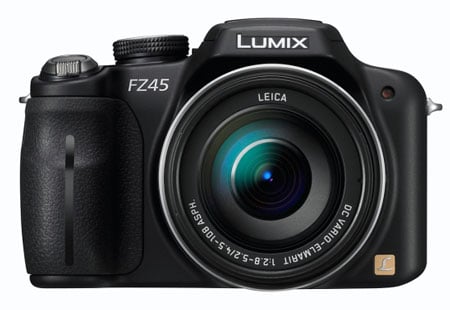
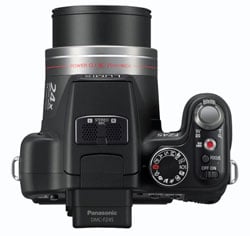
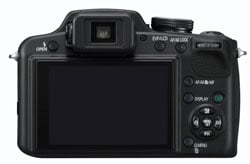
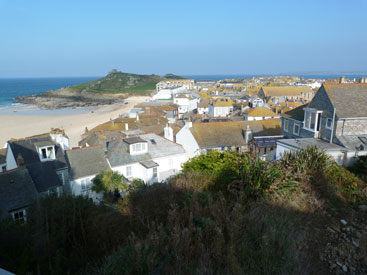
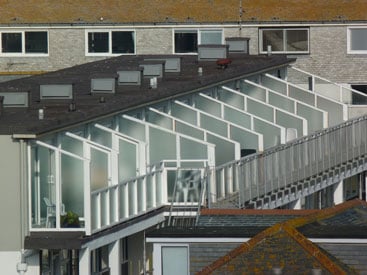
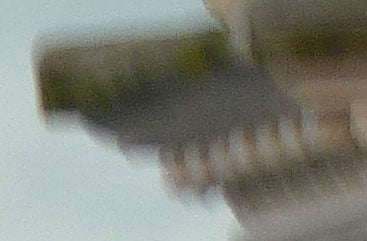
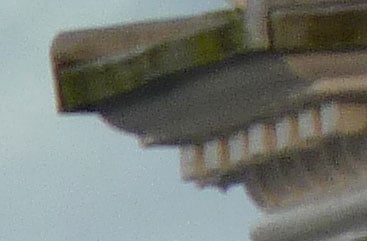
Posting Komentar untuk "Panasonic Lumix DMC-FZ45 / FZ40"